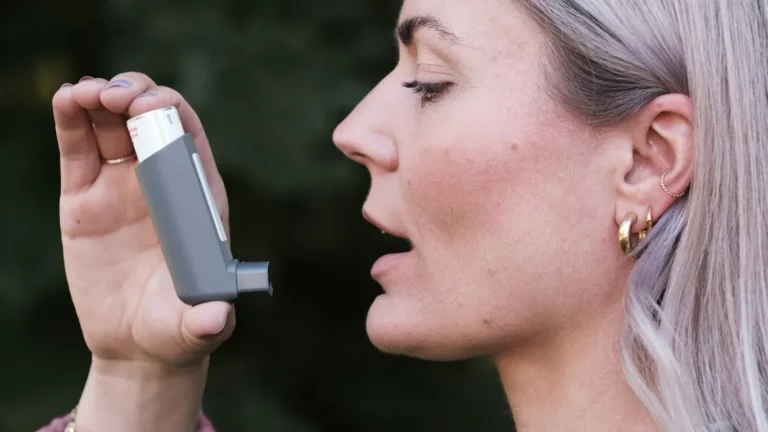Surprising Ways Green Apples Can Lower Blood Pressure Naturally
If you’ve ever wondered, can green apple lower blood pressure?, you’re not alone. This is a question I get all the time from my patients managing hypertension. As an Internal Medicine physician, I’ve seen countless fads come and go, but when it comes to something as simple and accessible as a green apple, the curiosity is valid. It’s crisp, tart, and packed with nutrients — but does it actually help your blood pressure? Let’s dive into the juicy details together. And yes, I’ll sprinkle in some of what I’ve seen in clinic too — because experience sometimes tells a story research hasn’t caught up with yet.
So, What’s in a Green Apple?

Before we get into blood pressure, let’s talk about what makes green apples (especially Granny Smiths) special. They’re not just tart and crunchy for fun. These apples are low in sugar compared to red varieties and loaded with:
- Fiber: Especially pectin, a soluble fiber that supports gut health and may help reduce cholesterol — a big win for cardiovascular wellness.
- Polyphenols: These plant-based antioxidants can help combat oxidative stress, a sneaky contributor to high blood pressure.
- Vitamin C: Not just for immune health — it also plays a role in vascular function.
- Potassium: Often overlooked in fruit talk, but potassium helps balance sodium levels, which is key in managing blood pressure.
I usually tell my patients: “Think of a green apple as your edible little blood vessel buddy — it’s working in subtle ways to support those arteries.”
Can Green Apple Lower Blood Pressure? Let’s Talk Science

Now to the heart (pun intended) of the matter. Can green apple lower blood pressure? Based on current research and what I’ve observed in practice, the answer isn’t a simple yes or no. But there’s a definite trend in the right direction.
1. Polyphenols: The Unsung Heroes
Green apples are rich in a class of polyphenols called flavonoids — especially quercetin. Research has shown quercetin may help relax blood vessels, improve endothelial function, and reduce inflammation — all of which can contribute to a modest reduction in blood pressure over time. I’ve had patients who incorporated more flavonoid-rich foods (green apples included) and reported better BP control between visits.
2. Fiber’s Role in the Bigger Picture
Soluble fiber like pectin can help lower LDL cholesterol, which indirectly supports healthier arteries and better blood pressure regulation. It’s not a direct BP-lowering agent, but think of it like cleaning the pipes so everything flows better. A clean system puts less strain on your heart.
3. Potassium-Sodium Balance
This is where things get clinically relevant. The average diet is way too high in sodium and low in potassium — a recipe for elevated BP. Green apples don’t top the potassium charts like bananas, but they add a helpful nudge. I sometimes recommend them as a late afternoon snack to patients trying to naturally tweak their electrolyte balance without supplements.
Real-World Benefits: What I See in My Practice

In clinic, I’ve noticed patients who add more whole foods like green apples into their routine — instead of reaching for processed snacks — often see better BP numbers overall. It’s rarely just the apple, of course. It’s that shift toward more mindful, heart-smart choices.
One of my longtime patients — let’s call her Maria — started eating a green apple every morning with her oatmeal. Nothing else changed dramatically in her lifestyle. Three months later, her systolic pressure dropped by 6 points. That’s not magic — that’s what happens when your diet starts working with your meds, not against them.
Small changes stack up. That’s something I always emphasize. One green apple won’t fix hypertension, but it’s a step — and a tasty one — in the right direction.
How to Add Green Apples to a Blood Pressure-Friendly Diet

So now that we’ve laid the groundwork, let’s talk real-world strategies. Patients often ask me, “Okay doc, I bought the apples… now what do I do with them?” I get it — we’re all busy. And nobody wants to chew on a plain apple every day like it’s homework.
Here are some simple, sustainable ways I recommend working green apples into your routine — without getting bored or burned out:
- Chop them into oatmeal — Granny Smiths add the perfect tart balance to warm oats. Toss in some cinnamon and chia seeds, and boom: a potassium-rich breakfast with fiber and flavonoids baked right in.
- Snack with a twist — Slice and dip into almond butter or low-sodium hummus. It’s satisfying, crunchy, and helps beat that mid-afternoon salt craving that can derail blood pressure goals.
- Green apple salsa — Yes, really. Dice apples, red onion, cilantro, a bit of lime juice, and jalapeño for a heart-healthy topping that pairs great with grilled chicken or fish.
- Blend it — Toss half a green apple into a smoothie with spinach, cucumber, and a splash of coconut water for a BP-friendly power drink.
My tip? Pair them with protein or healthy fats to stay full longer and avoid the blood sugar rollercoaster. This helps stabilize energy — and mood — which matters more than people think in chronic disease management.
Beyond Apples: What Else Supports Blood Pressure Control?

Let’s zoom out a bit. While green apples are a lovely piece of the puzzle, they’re not the whole board. Blood pressure is a complex beast — and managing it well usually means combining nutrition, medication, and lifestyle changes.
Here’s what I often emphasize in patient consults:
- DASH Diet principles: Low in sodium, high in potassium, and rich in whole foods like leafy greens, berries, legumes, and — yes — apples.
- Consistent movement: Walking 30 minutes most days can have a measurable effect on both systolic and diastolic pressures. Bonus points if you take that walk after dinner, when BP can spike.
- Mindful stress reduction: Deep breathing, yoga, journaling… pick your flavor. Chronic stress hormones like cortisol and adrenaline can nudge BP up without you even realizing.
- Limiting alcohol and caffeine: Not always a popular suggestion, but key for certain individuals — especially those with resistant hypertension.
One patient of mine — a nurse juggling night shifts and raising two kids — was dealing with high blood pressure in spite of a solid diet. Once we dialed in her sleep hygiene and helped her incorporate just 10 minutes of meditation per day, her readings started trending down. That’s the kind of whole-person care that makes a difference.
What Does the Research Actually Say?

Alright, let’s nerd out for a second — because evidence matters, and I’m not just handing out apples based on vibes.
Several observational studies have linked higher fruit intake (particularly high-fiber, low-glycemic options like green apples) with reduced incidence of hypertension. In a meta-analysis published in the American Journal of Clinical Nutrition, flavonoid-rich fruits were associated with improved vascular outcomes. And quercetin, that little powerhouse compound in green apples, has shown promise in human trials for reducing both systolic and diastolic pressure — though more studies are needed for dosage clarity.
That said, context is everything. These studies don’t prove green apples are a miracle cure. But they absolutely point to consistent benefits when part of a well-rounded, plant-forward diet. From my perspective? It’s one of those “can’t hurt, might help” additions with very few downsides. Plus, apples are affordable, portable, and don’t require a recipe — hard to beat that kind of convenience.
When to Be Cautious
Of course, even the healthiest foods aren’t right for everyone. Here’s where clinical judgment comes in.
- Diabetics — Although green apples are lower on the glycemic index, portion control still matters. I advise pairing them with protein or fat to prevent blood sugar spikes.
- Kidney disease patients — Potassium levels need to be monitored closely. If someone has advanced CKD, we often have to limit even natural sources of potassium.
- GERD sufferers — The acidity of green apples can trigger reflux symptoms in some folks, especially if eaten on an empty stomach.
This is where having a good relationship with your provider matters. Dietary advice should be as personalized as your medication plan — and in my office, we always make time for the “what should I eat?” conversation.
Because honestly? That’s where most patients feel lost. Food feels complicated. My job is to make it make sense — and to turn everyday choices, like grabbing a green apple, into powerful health tools.
Practical Tips for Patients: Making It Stick

Here’s the truth I always share with my patients: It’s not the apple that changes your life. It’s the consistency.
You could eat a green apple every morning for a week and not see a single change in your blood pressure. But stack that habit with smarter sodium choices, better sleep, a little more walking, and regular check-ins? Now we’re talking transformation. That’s where the wins happen.
Five Habits That Amplify the Benefits of Green Apples
- Keep apples visible — Sounds silly, but if they’re in a bowl on the counter instead of lost in the crisper drawer, you’re more likely to grab one.
- Pair with protein — This helps balance blood sugar and keeps you satisfied longer. Think green apple slices with a boiled egg or Greek yogurt.
- Hydrate strategically — Drinking water with your snacks supports kidney function and sodium balance — both crucial in BP control.
- Track your readings — I love when patients use home BP monitors. It helps connect lifestyle changes to real data, which builds motivation.
- Make it enjoyable — Add cinnamon, nut butter, or slice into salads. Don’t force it — make it delicious.
I once had a patient — a retired teacher — who hated apples. Just didn’t like the texture. So, instead, she started blending green apples into homemade vinaigrettes and salsas. That was her way in. And guess what? She stuck with it. Her BP dropped, and so did her cholesterol.
Green Apples vs. Other Fruits: Is There a Clear Winner?

This question comes up in clinic more than you’d expect. “If green apples are good for BP, what about bananas? Or blueberries?”
Short answer: most whole fruits support heart health in one way or another. But here’s how green apples stand out:
- Lower glycemic impact — Less sugar spike than tropical fruits.
- Higher fiber-to-sugar ratio — Keeps digestion slower and more stable.
- Tartness curbs sweet cravings — Especially useful for folks trying to cut down on processed sugars.
That said, diversity matters. I encourage patients to rotate fruits — mix green apples with berries, citrus, melon — to take advantage of the unique phytochemicals in each.
What I Tell My Patients About Green Apples and Blood Pressure
Here’s the honest, experience-based advice I share in consults, without the fluff:
- Yes, green apples can support blood pressure management.
- No, they’re not a substitute for medication or a DASH-aligned diet.
- They work best when part of a bigger pattern of healthy habits.
- They’re especially useful for those with sodium sensitivity, metabolic syndrome, or a sweet tooth they’re trying to manage.
And here’s what I say when patients are skeptical: “Let’s try it for a few weeks. Add one green apple a day — not as a cure, but as a step. Let’s track your blood pressure, your cravings, your energy. If nothing changes, no harm done. But if it helps — you’ve just found one more tool in your BP toolbox.”
References
- https://www.ncbi.nlm.nih.gov/
- https://www.heart.org/
- https://www.cdc.gov/
- https://www.hsph.harvard.edu/
- https://www.mayoclinic.org/
Disclaimer
This article is for informational purposes only and is not a substitute for professional medical advice, diagnosis, or treatment. Always consult your physician or other qualified health provider with any questions you may have regarding a medical condition or dietary change. As a practicing Internal Medicine physician, I offer general insights based on both clinical experience and evidence-based guidelines, but individual needs vary.

Dr. Gwenna Aazee is a board-certified Internal Medicine Physician with a special focus on hypertension management, chronic disease prevention, and patient education. With years of experience in both clinical practice and medical writing, she’s passionate about turning evidence-based medicine into accessible, actionable advice. Through her work at Healthusias.com, Dr. Aazee empowers readers to take charge of their health with confidence and clarity. Off the clock, she enjoys deep dives into nutrition research, long walks with her rescue pup, and simplifying medical jargon one article at a time.





